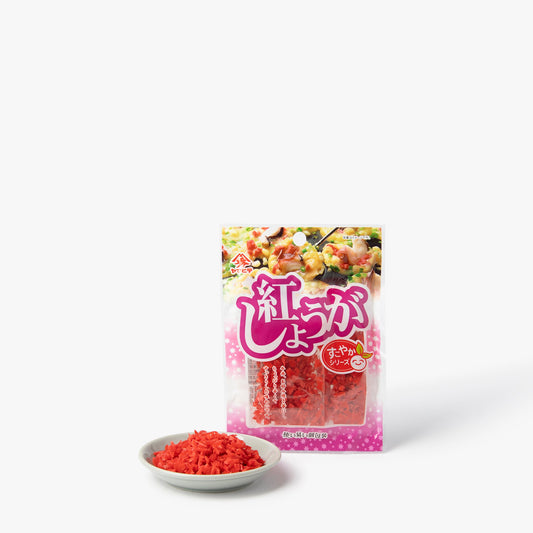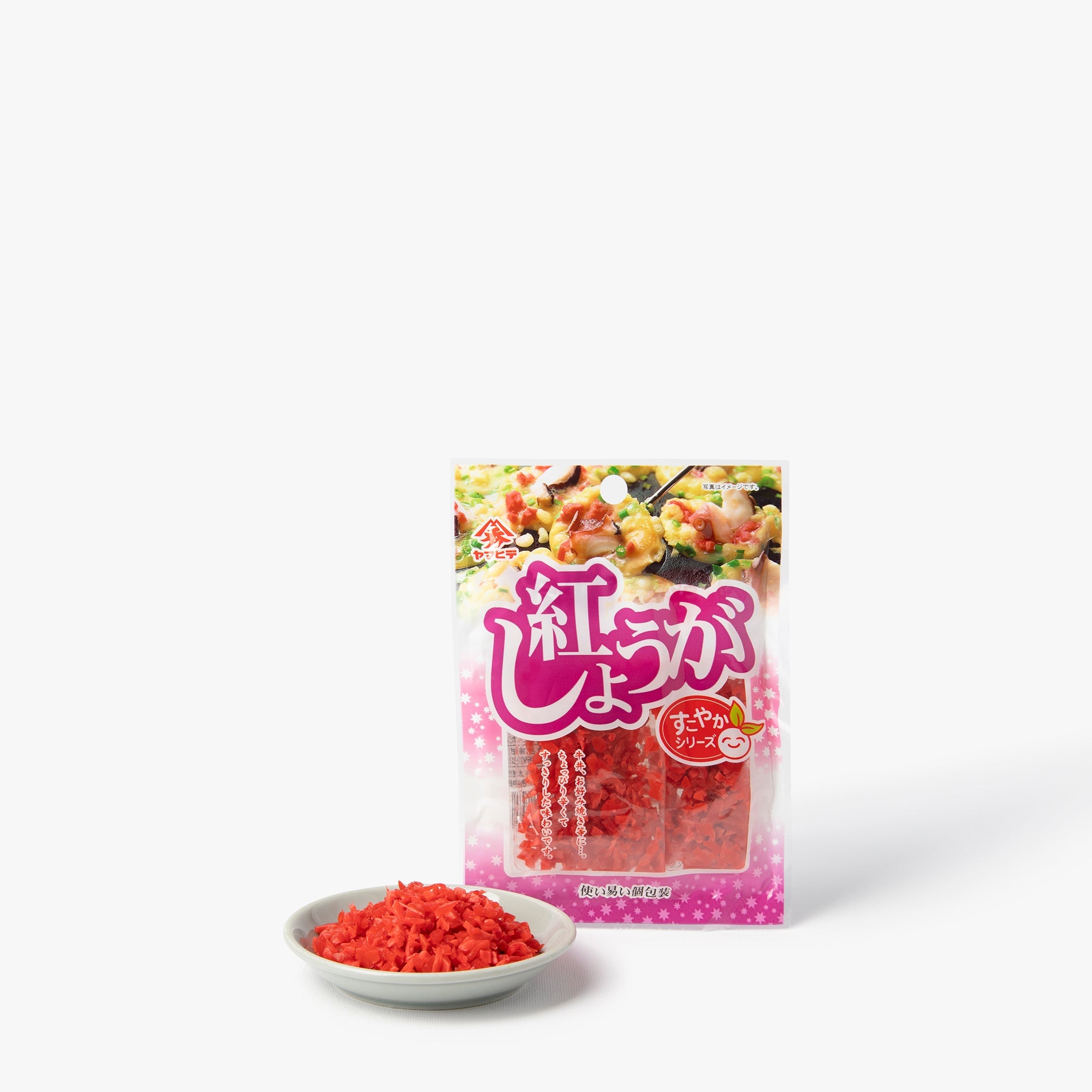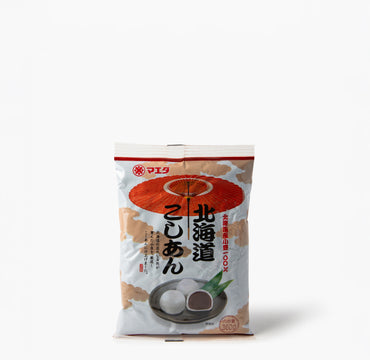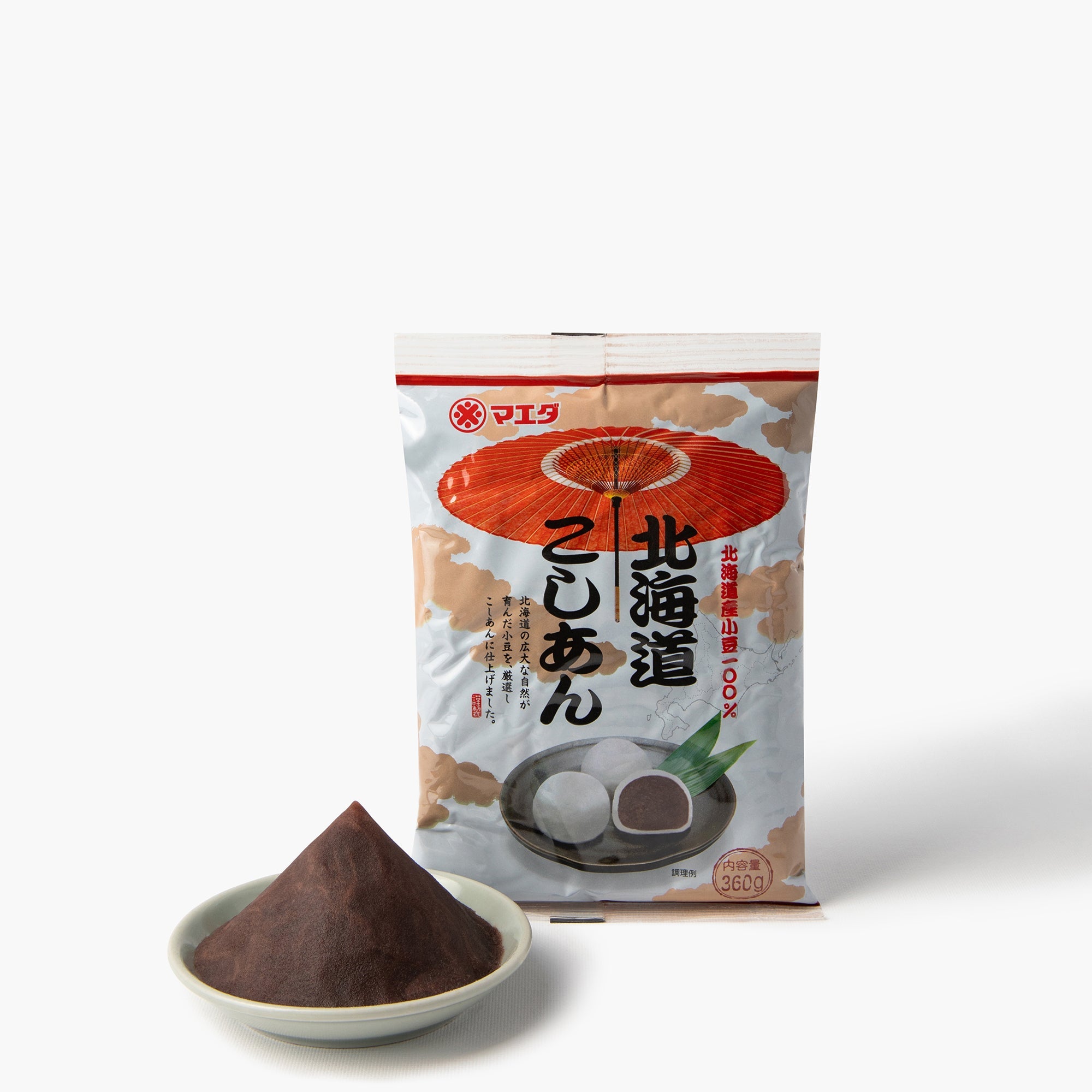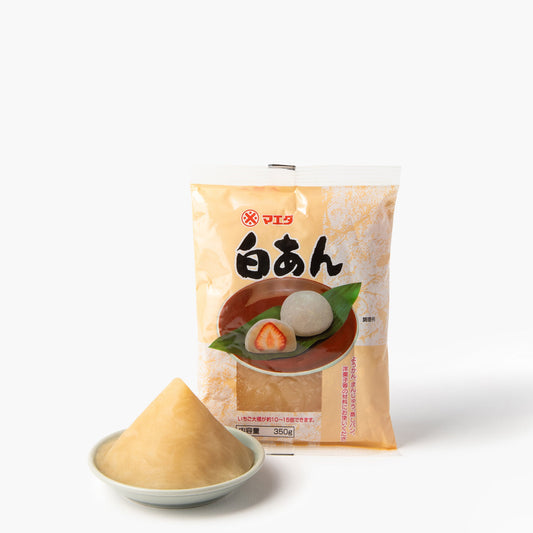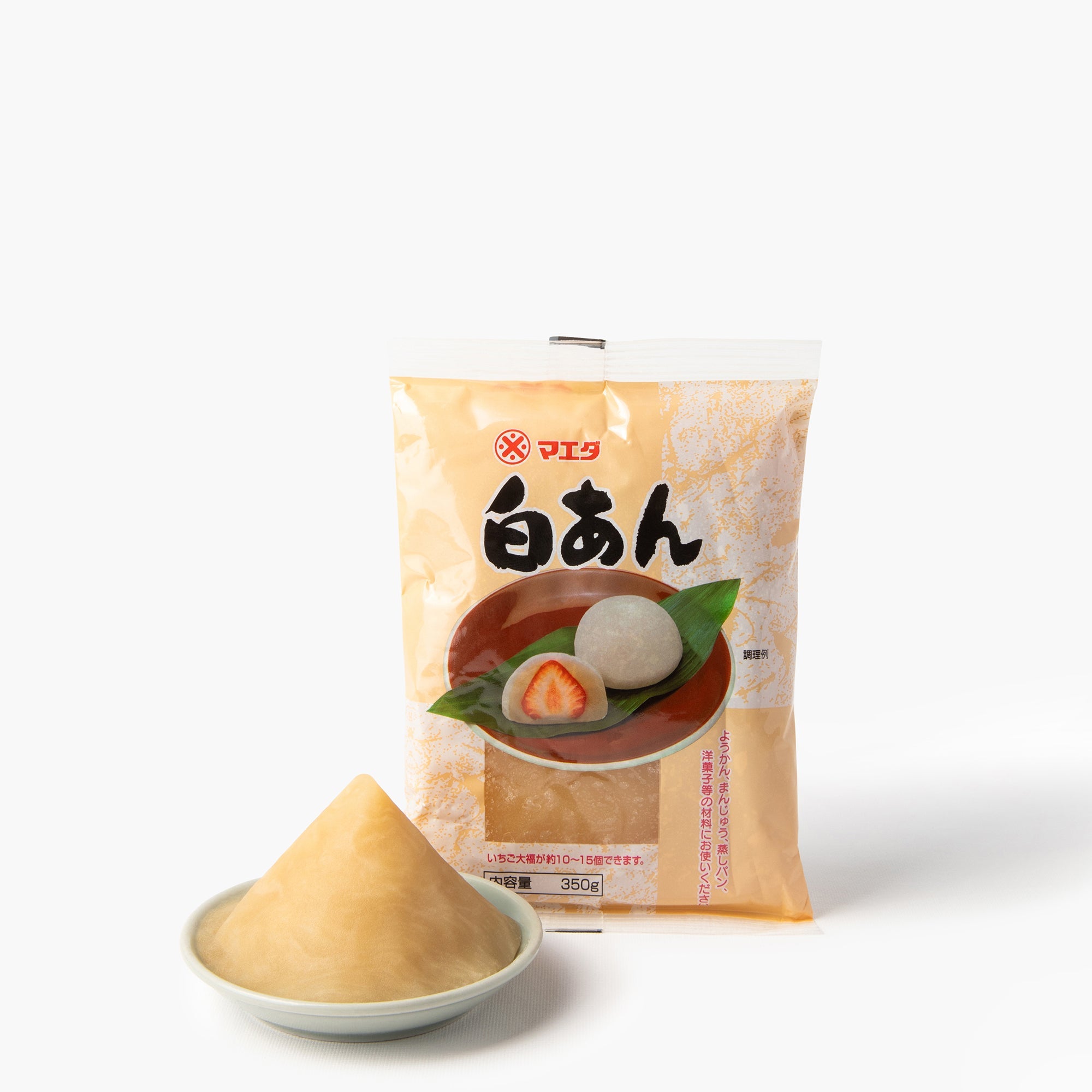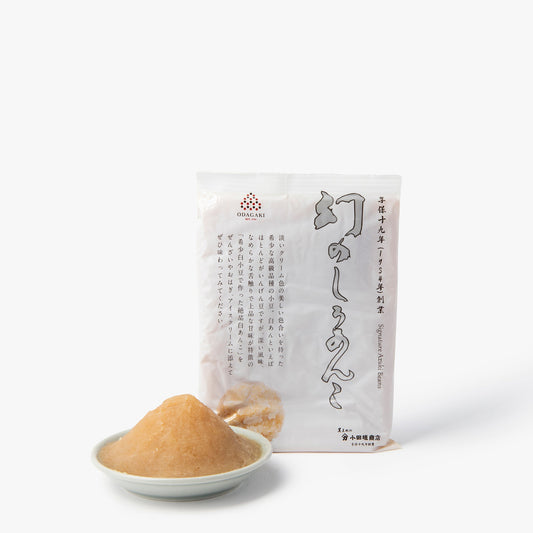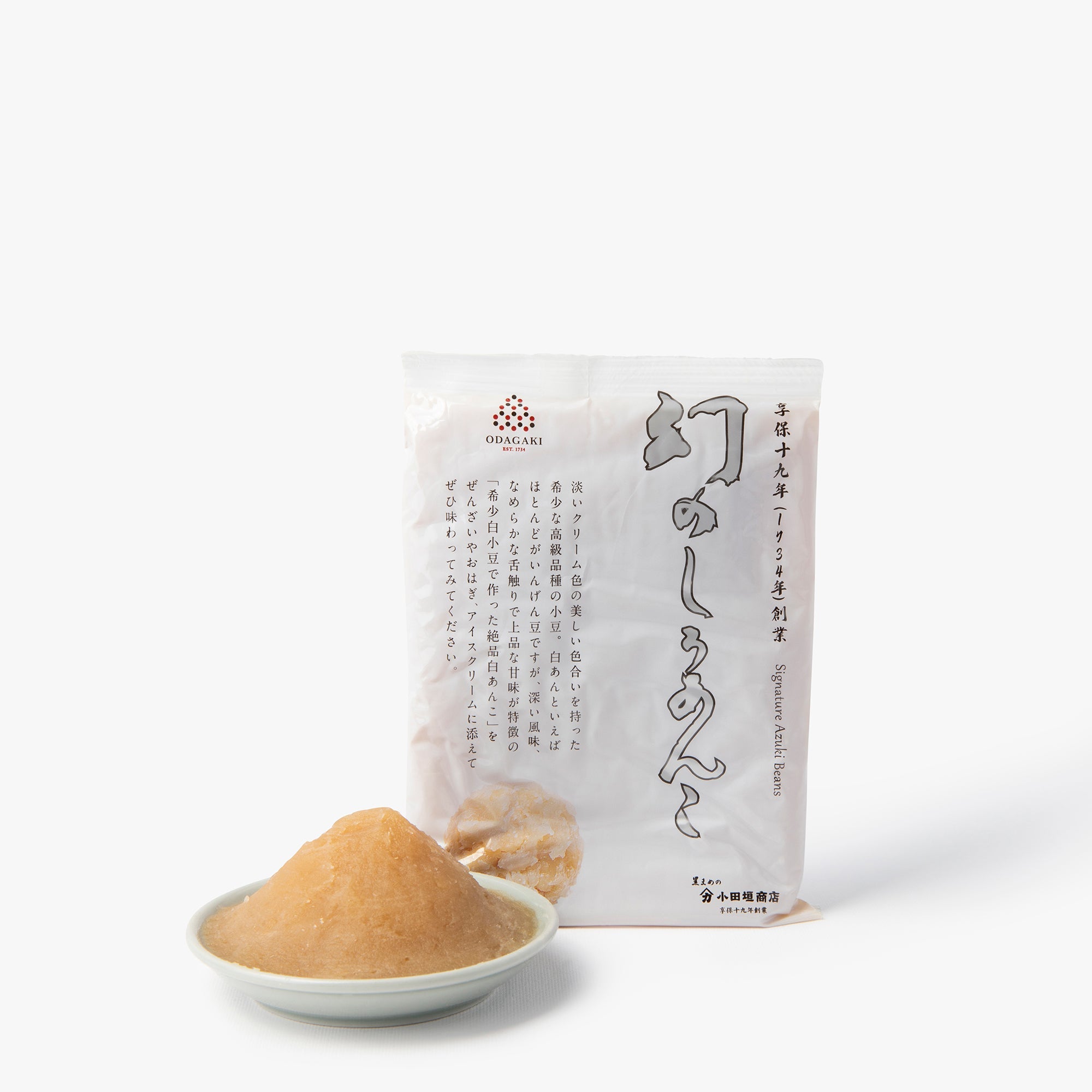Find out more about anko, azuki & soya
What is anko?
Anko is a sweet paste made from red azuki beans, widely used in Japanese pastry-making. It is prepared by cooking the beans with sugar to a smooth or grainy texture, depending on the type of anko. Anko is often used to garnish traditional desserts such as dorayaki, manju and taiyaki.
What's the difference between azuki beans and soybeans?
Azuki beans and soybeans are two types of legume commonly used in Japanese cuisine, but they differ in taste, texture and uses. Azuki beans are smaller, red in color, and are mainly used to make anko or sweet desserts. Soybeans, on the other hand, are more versatile and are the basis of many products such as tofu, miso and soy milk.
What are the main uses of anko in Japanese cuisine?
Anko is mainly used as a sweet topping in a variety of Japanese pastries. It is found in desserts such as dorayaki (filled pancakes), mochi (glutinous rice cakes), manju (small steamed cakes), and taiyaki (fish-shaped cakes). It can also be incorporated into ice creams or eaten as is with tea.
How to make homemade anko?
To make homemadeanko, start by cooking azuki beans until tender. Drain them, then mash them with sugar and a little water to the desired consistency. You can adjust the amount of sugar to suit your taste and cook the mixture to a thick paste.
What are the different types of anko?
There are two main types of anko: koshian, which is a smooth paste with the bean skins removed, and tsubuan, which is a more granular paste with chunks of beans. The choice between the two depends on the desired texture of the dessert.
How to store anko?
Anko should be stored in an airtight container in the refrigerator. It will keep for about a week, but for longer storage, it can be frozen.
What are the nutritional benefits of soybeans?
Soya beans are rich in protein, fibre, vitamins and minerals. They are also an excellent source of isoflavones, which are known for their health benefits, including reducing the risk of cardiovascular disease and supporting bone health.





















